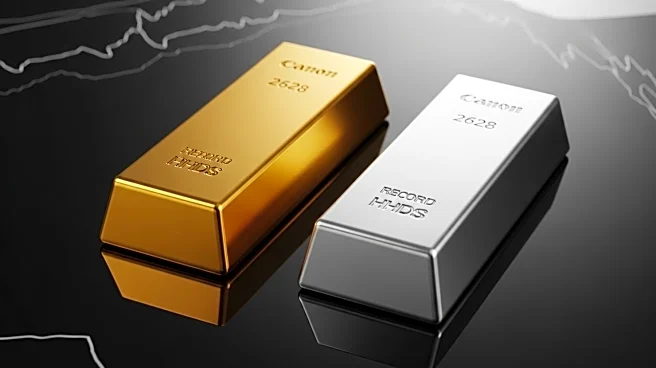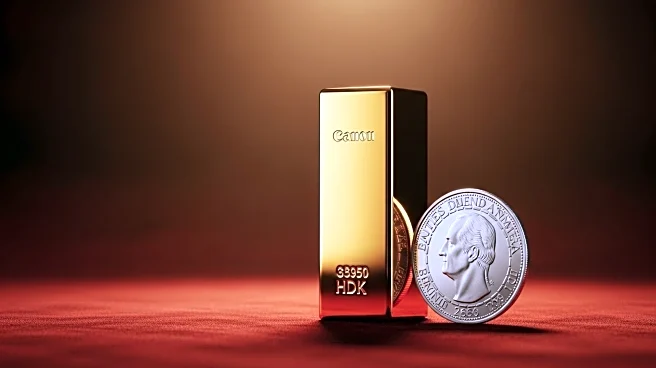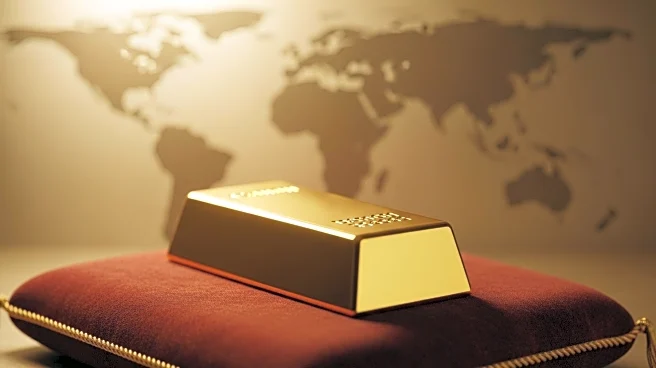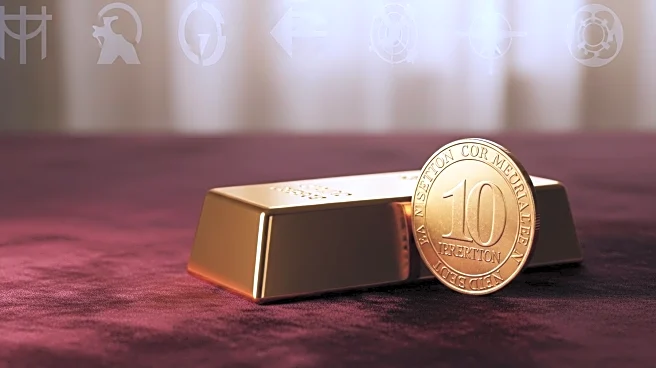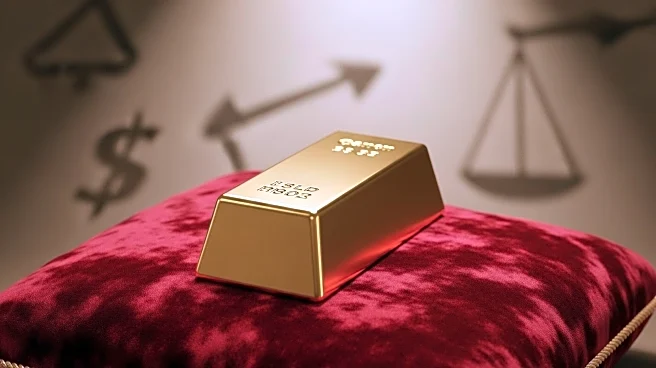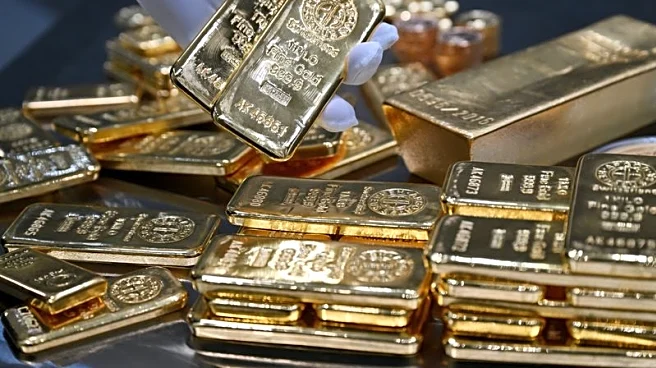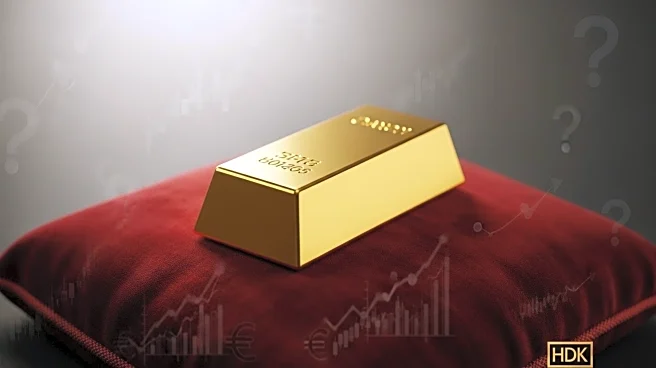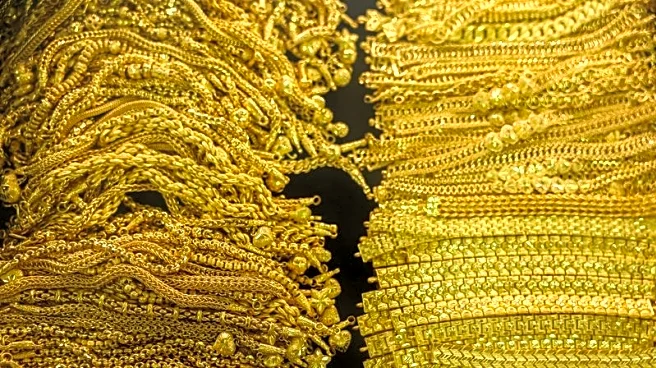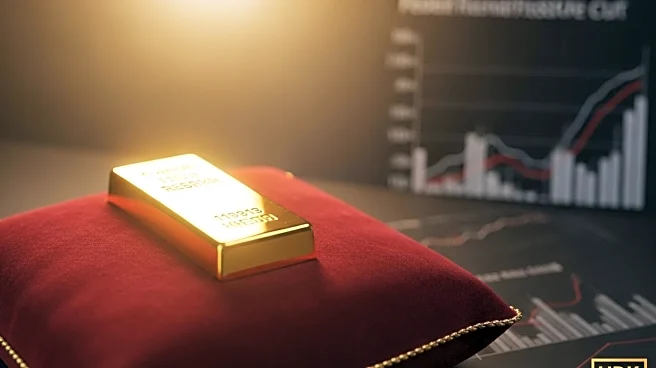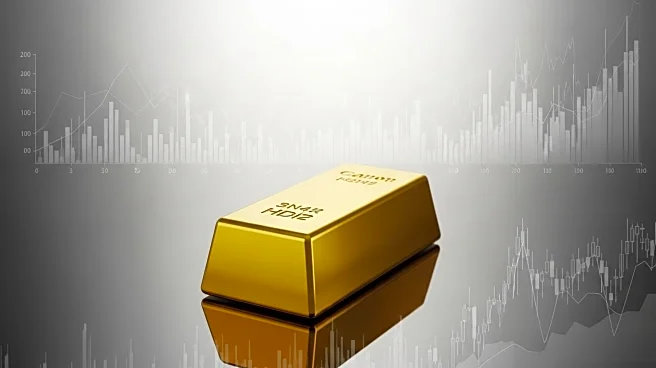What's Happening?
Gold prices have rebounded from earlier losses and are on track for an eighth consecutive weekly gain, driven by political and economic uncertainty and expectations of further U.S. rate cuts. Spot gold reached a record high of $4,059.05 per ounce earlier this week and is currently trading at $3,998.02 per ounce. Silver has also seen significant gains, rising 2.6% to $50.40 per ounce after hitting a record high of $51.22. The rally in precious metals is supported by geopolitical risks, central bank buying, exchange-traded fund inflows, and trade-related uncertainties.
Why It's Important?
The surge in gold and silver prices reflects broader economic and geopolitical uncertainties, prompting investors to seek safe-haven assets. The increase in precious metals prices can impact various stakeholders, including investors, central banks, and industries reliant on these metals. As gold and silver become more attractive alternatives to traditional currencies, they may influence monetary policies and investment strategies globally. The potential for further U.S. rate cuts could continue to drive demand for non-yielding assets like gold and silver.
What's Next?
Investors anticipate two Federal Reserve rate cuts of 25 basis points each in October and December, which could further influence precious metals prices. Additionally, geopolitical developments, such as the ceasefire between Israel and Hamas, may impact market dynamics. The ongoing economic uncertainties and potential changes in monetary policy will likely continue to affect the demand for gold and silver.
Beyond the Headlines
The current backwardation in silver markets, where spot prices are higher than future prices, suggests potential volatility. If contango returns, a short pullback in silver prices could occur, presenting buying opportunities for investors. The dynamics of precious metals markets highlight the complex interplay between economic indicators, geopolitical events, and investor sentiment.

